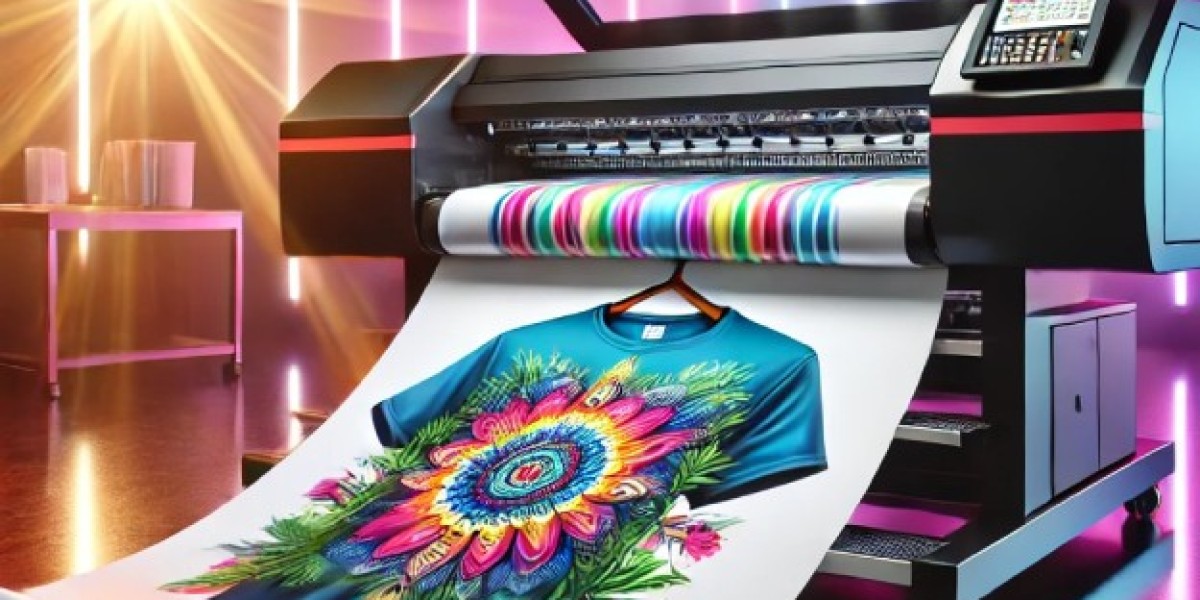In a market hungry for customization, DTF printers have carved out a powerful niche in the apparel printing world. As trends shift toward personalization, low minimum order quantities, and on-demand production, Direct to Film (DTF) printing stands out as one of the most exciting developments in garment decoration.

Whether you’re an entrepreneur, an apparel brand, or a print shop owner, understanding how DTF printers work—and what makes them a game-changer—is critical for staying ahead in a competitive industry. Let’s explore the technology, process, benefits, and future potential of DTF printers in 2025 and beyond.
What is a DTF Printer?
A DTF printer is a specialized machine that prints designs onto a special PET film, which is then transferred to a fabric surface using a powder adhesive and heat press. The technology merges the best aspects of digital printing and thermal transfer, resulting in vibrant, durable prints with minimal production barriers.
Unlike Direct to Garment (DTG) printing, which prints directly onto fabric, DTF offers greater versatility in materials and applications.
Why DTF Printing Is Gaining Ground
The rise of DTF printing isn't just a trend—it’s a response to real limitations in traditional apparel printing methods. Here's why the demand is skyrocketing:
1. Unlimited Fabric Options
DTF works on cotton, polyester, nylon, rayon, spandex, silk, and blended fabrics—unlike DTG or sublimation, which are limited in fabric compatibility.
2. No Pre-Treatment Hassle
DTG printing often requires a pre-treatment step before printing. DTF eliminates this extra work, cutting down production time and labor.
3. Perfect for Small or Large Runs
Whether you’re producing one custom shirt or 500, DTF fits the bill. There's no need for screen setups or color separations.
4. Long-Lasting Prints
DTF transfers have excellent wash durability. When applied correctly, prints can endure dozens of washes without fading or cracking.
5. Cost-Effective Entry Point
Compared to screen printing and DTG, DTF printers are more affordable, especially for small businesses or startup brands.
The DTF Printing Process in Action
To really understand the magic of DTF printers, let’s look at each step in the printing workflow:
Step 1: Design Preparation
You start by creating or importing your design using any graphic design software. Designs must be mirror-flipped before printing.
Step 2: Printing on PET Film
The DTF printer applies color ink (CMYK) first, followed by a layer of white ink. This allows your design to stand out on both dark and light garments.
Step 3: Powder Coating
While the ink is still wet, a layer of thermoplastic polyurethane (TPU) adhesive powder is applied to the film. It sticks only to the inked area.
Step 4: Curing the Powder
Using a heat press or oven, the powder is cured, transforming it into a flexible adhesive layer ready for transfer.
Step 5: Heat Transfer to Garment
The PET film is laid onto the garment and heat-pressed. The heat activates the adhesive, bonding the design to the fabric.
Step 6: Cold Peel and Post-Press
After cooling, the film is peeled off, and the design is firmly embedded in the garment. A final quick press can enhance durability and finish.
What Equipment Do You Need to Start DTF Printing?
Starting your DTF business doesn’t require a huge investment. Here’s what you’ll need:
DTF Printer (converted Epson, or purpose-built models with dual heads)
PET Transfer Film (sheets or rolls)
DTF Inks (pigment-based, includes CMYK + white)
Adhesive Powder (hot-melt)
RIP Software (like AcroRip or DigiRIP for precise ink control)
Heat Press (preferably with adjustable pressure)
Curing Oven (optional, for batch curing)
DTGpro.com, one of the largest DTF suppliers in the USA, offers complete starter bundles that include all of the above.
DTF Printers vs. Other Printing Technologies
Let’s see how DTF compares to other popular apparel printing methods:
| Feature | DTF Printing | DTG Printing | Screen Printing | Sublimation |
|---|---|---|---|---|
| Fabric Compatibility | All fabrics | Cotton only | Mostly cotton/poly | Polyester only |
| Wash Durability | High | High | High | Medium |
| Setup Cost | Low | Medium–High | High | Medium |
| Speed for Small Runs | Fast | Moderate | Slow | Moderate |
| Color Vibrancy | Excellent | Excellent | Good | Excellent |
| Print Detail | High | High | Medium | High |
Industries That Benefit from DTF Printing
DTF printing has become a go-to solution in multiple sectors:
?️ Fashion Brands
Small brands love DTF for its ability to create eye-catching, limited-run designs without upfront risk.
? T-Shirt Printing Shops
Print shops use DTF printers for personalized clothing, event merchandise, and corporate branding.
? E-commerce Sellers
Online sellers on Etsy, Shopify, and Amazon use DTF to create custom, print-on-demand apparel for niche audiences.
? Uniform Manufacturers
From sportswear to company uniforms, DTF ensures durability and visual impact on various textiles.
Challenges in DTF Printing (and How to Overcome Them)
No technology is perfect. Here are some common DTF challenges—and tips to fix them:
❌ Ink Clogging
White ink is prone to settling. Solution: Shake ink bottles regularly and schedule auto-cleaning cycles.
❌ Powder Residue
Excess powder can leave a chalky finish. Solution: Apply a light second press after peeling for a clean result.
❌ Color Banding
This occurs when print heads are misaligned. Solution: Perform regular nozzle checks and calibrations.
❌ Film Curling
PET film may warp with humidity. Solution: Store in a cool, dry place and use anti-static gloves.
Tips for Optimizing DTF Workflow
Want to print like a pro? Keep these best practices in mind:
Use High-Quality Film & Ink: Poor materials can ruin otherwise perfect designs.
Test Press Settings for Each Fabric: Different materials require different time/temperature combinations.
Keep Your Workspace Clean: Dust and debris can affect powder application and print quality.
Label Your Transfers: When batch printing, label film sheets to avoid confusion during application.
The Future of DTF Printing
DTF technology is only just getting started. Here's what we’re seeing in the pipeline:
⚙️ Automatic Powdering Machines
Fully automated powder applicators and curing systems are reducing manual labor and increasing throughput.
? Larger Format Printers
New DTF printers can handle 24-inch or even 60-inch rolls, perfect for bulk orders and large garments.
? Advanced RIP Software
AI-powered RIPs are improving color accuracy and reducing ink waste with intelligent print sequencing.
? Eco-Friendly Inks
Manufacturers are now introducing water-based, biodegradable DTF inks for a more sustainable footprint.
Cost Analysis: Is DTF Profitable?
The short answer is—yes. Here’s a simple breakdown:
| Item | Cost (Estimate) |
|---|---|
| PET Film (per print) | $0.50 |
| DTF Inks (per print) | $0.60 |
| Adhesive Powder | $0.10 |
| Shirt Blank | $2.00 |
| Total Cost per Shirt | $3.20 |
| Average Sale Price | $20.00 |
| Profit Margin | ~$16.80 |
With these numbers, even small runs yield high profits—and you don’t need to print in bulk to make it worth your time.
Is DTF Printing Right for You?
If your business values:
Flexibility across fabrics
On-demand printing
Low setup costs
Vivid, high-resolution prints
...then DTF printing is a no-brainer. It democratizes high-quality apparel decoration and makes custom garment production more accessible than ever.
Final Thoughts
DTF printers represent a major leap forward in apparel decoration technology. By blending the best of digital printing with the flexibility of heat transfer, they empower creators and businesses to produce stunning, durable designs quickly and affordably.
Whether you're launching a custom t-shirt line, expanding a print shop, or just testing the waters of apparel design, DTF printing offers you the tools to grow, scale, and thrive in 2025.
Ready to dive in? Visit DTGpro.com—the largest Direct to Film supplier in the USA—for everything you need to start your DTF journey today.



